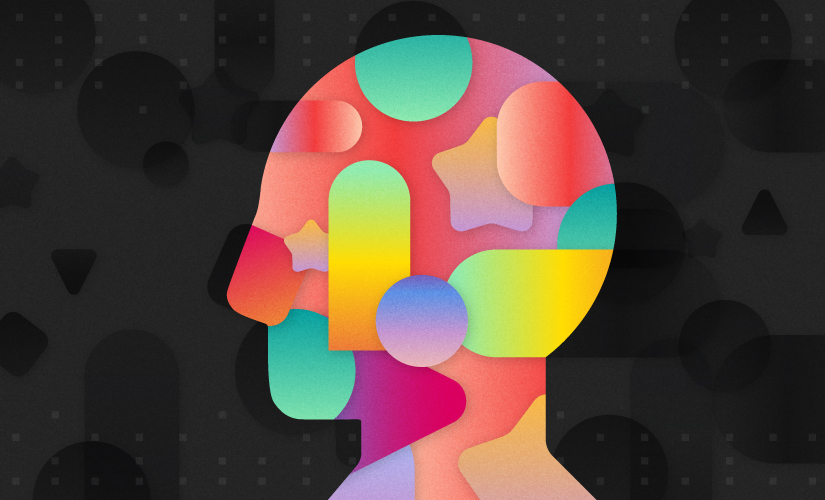How emotions influence how we give
November 22, 2021
8 min read
From guilt to fear, emotions can alter our approach to charitable giving.
One of the common misunderstandings regarding personal finance is that it all boils down to numbers. However, researchers have found that emotions impact our financial decisions, too, and giving is no exception.
Most studies out there show us that helping others makes us happier and ultimately leads us to give more. Still, negative emotions can affect how we give and the impact of our generosity.
Here’s how guilt, fear, and anger can influence how you give and how to manage these feelings.
If you’re struggling with guilt
Following a traumatic event (such as COVID-19), you may feel burdened with guilt for not being as badly affected as others, a condition known as survivor’s guilt.
This might look like experiencing repetitive anxious thoughts on why your income has been spared when others’ salaries have not, or feeling numb or burnt out on economic news. This feeling can prompt people to go into overdrive with giving because they feel bad.
“Guilt is a huge motivator,” said Aseel El-Baba, a Toronto-based financial therapist. “It’s one of those emotions that push you to the polarity of a certain action.”
While there are many benefits of giving—including increased happiness, less stress, and lower blood pressure—giving away too much, too quickly can lead to donor burnout or fatigue. If not addressed, this can harm your mental health and finances.
Guilt is a huge motivator.
The first way to counteract is to practice gratitude. “Gratitude has a huge impact on increasing philanthropy habits and naturally increasing holistic wealth,” said El-Baba.
Take a moment the next time you feel compelled to give away all of your money and write a list of at least 10 things for which you are grateful. When we express gratitude, our brain releases dopamine and serotonin, neurotransmitters responsible for the emotions that make us feel good. You may conclude your financial decisions are aligned with your values, and the urge to splurge on donations will be under control.
Another way to avoid donor burnout or remorse is by making sure you donate to causes that are important to you. It would help if you made a list of values or intentions for your charitable donation and considered writing a mission statement to guide your giving. There’s no rush. Take your time while you set a giving strategy.
If you’re feeling angry
Have you ever heard of the term “rage giving”? Wired Impact defines it as when someone throws money at a cause they care about because they don’t know what else to do. For some, giving can be viewed as a form of resistance or activism.
“The larger the trauma, the larger the trigger in your life,” said El-Baba.
For example, according to a 2017 report, after the 2016 U.S. election, women’s donating to progressive groups outstripped men’s by 6 times. Since the killing of George Floyd, it seems at least a small part of the surge of donations to organizations such as Black Lives Matter can be attributed to donors motivated by anger, as well as altruism.
Black Lives Matter and variations on the term were by far the most searched terms on the Charitable Impact platform in 2020, displacing “love” as the top term in a previous yearly analysis.
Giving from a place of anger doesn’t necessarily empower the donor.
Practicing generosity in reaction to anger has clear benefits and could seem like a healthy way to process this emotion. However, there are drawbacks to consider. Some stakeholders in the philanthropy space are concerned that rage philanthropy has weaponized the act of donating. For charities, it can be disruptive, unreliable, and unsustainable (e.g., an organization could receive an influx of cash one year and see a drop in donations the next, making long-term planning difficult).
Giving from a place of anger doesn’t necessarily empower the donor. Charitable Impact Research Strategist Lise Owens knows from her own experience on her charitable giving journey. In the past, the way she donated money was a lot more reactive.
“I would see an ad or hear about an event and give based on just reacting,” she said. “Now, if something happens in the world where I want to be able to respond, I have money set into an account that’s basically saved for charitable giving.”
If you’re afraid
Fear plays a significant role in our money stories because it is associated with stability and security.
“Anytime we have human fear for our security or feel that our security is shaken on any level, then fear is heightened—especially our amygdala, which is responsible for flight, fight, or freeze responses,” said El-Baba.
Unfortunately, fear can cause us to think with a scarcity mindset—when you’re fixated on a lack of something, usually time or money. This emotion often results in people holding back on giving. For example, if you don’t have much disposable income, you can neglect to give within your budget fearing you don’t make or have enough money.
“When you’re operating from a scarcity perspective, giving is such a hard concept to grapple with,” said El-Baba. “Because even spending money on yourself is hard, let alone giving money away to other people or other charities.”
Fear is a feeling, not a fact.
The thing to remember about fear is that it is a feeling, not a fact. The fact is you don’t need a lot of money to give.
With a Charitable Impact account, you can put aside a small amount of money each month to give. It works almost like a subscription, so you can choose an affordable regular amount to be automatically deposited into your account. The next step would be to select a charity.
“There are all kinds of ways to give,” said Owens. “Maybe start by adding $10 a month, and in 10 years, you will have the means to give some publicly traded shares, which is the most tax-effective way of giving.”
How to manage emotions around financial decisions
People give for a variety of reasons: they desire to assist others, it is a family or religious custom, or they aim to improve their neighbourhood or community. Giving can result from a tax strategy, a sense of altruism, or a combination of multiple factors.
No matter why we give, we all go through a range of emotions that affect how we give. So how do we manage them?
The first layer is awareness.
“When particular emotions are heightened, it cripples us from a clear decision making,” said El-Baba. “I’m huge on self-care and mindfulness practices. These are really big components of healing in general, but also healing financial trauma.”
Once you understand why emotions are affecting you and where they come from, you can implement an action plan. One option is to reach out for professional support if you need it with a trauma-informed financial planner or therapist or seek support groups involved in generosity
This is a guest blog post by Zandile Chiwanza, a self-proclaimed “budget warrior” and personal finance journalist on a mission to improve your relationship with money.
Chiwanza knows firsthand the challenges of navigating mental health challenges without a thorough understanding of one’s financial resources. Now as a personal finance journalist, she channels her financial savvy and aptitude for writing into a clear but thundering call to action: Get your mindset and your money right.
You can follow her on Twitter and Instagram @zaknows.


